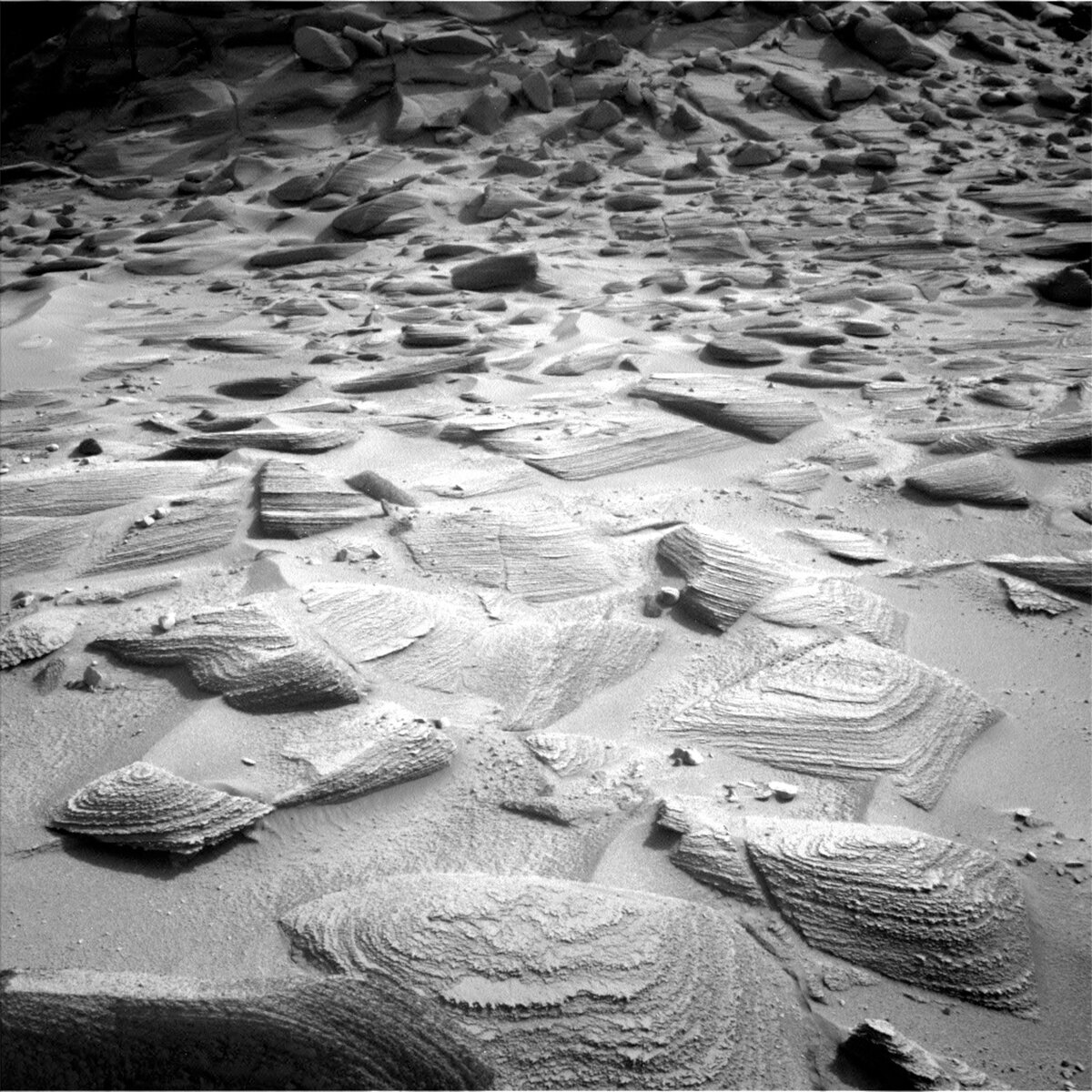3 min read

Curiosity is ten and a half years into operating in Gale cater, a concept that before and even a few years after landing seemed to be an impossible dream. When we landed, my daughter - then 6 - asked me how long the rover would last. I remember telling her “By the time you get to high school, we’ll be just about out of power to do much.” I am pleased to report to you today how wrong I was, as she is months away from graduating from high school and Curiosity's weekend plan uses all ten of our science instruments and all of our engineering cameras. It is as awe inspiring as the views from this high up on Mount Sharp.
MAHLI and APXS will image and analyze two targets. “Capanapro” is an example of the layered bedrock that typifies this region above the Marker Band, and “Amanauo” is one of the loose, gray rocks that we find littered on and among the bedrock slabs. MAHLI will image the MAHLI and APXS calibration targets, a ~twice a year monitoring of instrument performance relative to standard imaging targets. SAM will also conduct an instrument health check, while CheMin plans to discard the “Tapo Caparo” sample after successful analyses. These latter activities ensure we are to ready for whatever our next drill target is!
ChemCam will analyze two different targets, “Adankasima” and “Nova Esperanca,” which investigate specific bedrock layers around the rover - almost like reading individual pages of a book. ChemCam also plans to look far afield of our workspace, north toward the Gale crater rim, for two long distance RMI mosaics. The dust load in the atmosphere, which we know because of systematic Mastcam and Navcam imaging (some of which is included in this plan), is fairly low which makes clear long distance views possible. Mastcam plans to acquire hundreds of images in an attempt to capture all of the sites of interest to the planning team today. Stereo mosaics of the “Owenteik” butte, the stair-stepped bedrock where the Adankasima target is located, and small blocks like “Los Pijiguaos” reveal the structures and geologic relationships of the rocks exposed in the valley we are traversing. A multispectral analysis on the “Chenapau” butte hopes to unravel if there is a mineralogical cause behind the color differences that we observe on the butte. And a mosaic back toward the Marker Band will just be pretty.
RAD and REMS will run at their respective systematic cadences through the whole weekend, and DAN will run for hours in passive mode punctuated by period active pings of the subsurface to keep tabs on the H content of the bedrock.
Once we pick our way through the rocky terrain to the next workspace, we will acquire the Navcam and Hazcam images necessary to plan our next activities and drive, and MARDI will snap an image of the terrain beneath the rover.
Written by Michelle Minitti, Planetary Geologist at Framework







